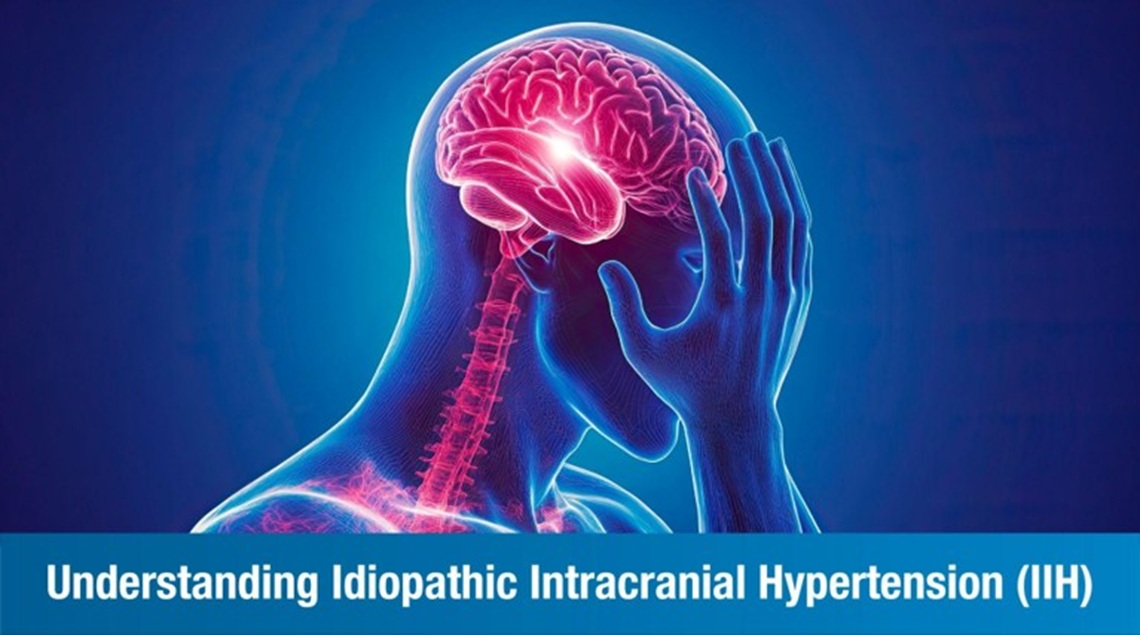
If you’ve been experiencing persistent headaches, vision issues, or unusual pressure in your head, it could be more than just stress. One condition that often goes unnoticed is Idiopathic Intracranial Hypertension (IIH)—a buildup of pressure in the brain without an identifiable cause.
Here, we’ll break down what IIH is, the IIH symptoms to look out for, potential IIH causes, and how the right idiopathic intracranial hypertension treatment can help manage the condition effectively.
Understanding “idiopathic” and intracranial pressure
“Idiopathic” means the cause is unknown, while “intracranial hypertension” refers to increased pressure within the skull. IIH mimics the symptoms of a brain tumor but occurs without any actual growth—hence the concern and confusion it often creates.
Why Is It Also Called Pseudotumor Cerebri?
Because its symptoms are similar to those caused by brain tumors (like headaches and vision changes), IIH is often called “Pseudotumor Cerebri,” meaning a “false brain tumor.”
Common IIH Symptoms to Watch For
Headaches and pulsatile tinnitus
One of the earliest IIH symptoms is a daily, dull headache that worsens in the morning or when lying down. Some people also hear a whooshing sound in their ears (pulsatile tinnitus).
Temporary vision loss and double vision
As pressure builds, it can affect the optic nerves, leading to blurred vision, double vision, or even brief episodes of blindness, making timely idiopathic intracranial hypertension treatment essential.
Nausea, dizziness, and photophobia
Other symptoms include nausea, balance issues, dizziness, and sensitivity to light (photophobia), which can impact day-to-day functioning.
IIH Causes and Risk Factors
Unknown primary causes (idiopathic nature)
True to its name, IIH causes aren’t fully understood. There’s no single trigger, which makes diagnosis tricky.
Risk factors – obesity, hormonal factors, certain medications
Certain factors increase the risk, including obesity, hormonal changes (like those from PCOS or pregnancy), and medications such as steroids or certain antibiotics. Recognizing these can help in early detection and prevention.
Idiopathic Intracranial Hypertension Treatment Options at Plexus
At Plexus, our approach to idiopathic intracranial hypertension treatment is comprehensive. It includes: Advanced diagnostics to confirm elevated intracranial pressure, Lifestyle and dietary guidance to reduce contributing factors like obesity, Medications that lower cerebrospinal fluid production, Vision care to prevent optic nerve damage, and Cell-based regenerative therapy in select cases for long-term management. Early treatment helps relieve symptoms, prevent complications, and protect vision.
Living with IIH – Management Tips
While treatment is crucial, lifestyle changes also play a big role. Here are a few ways to manage IIH better: Maintain a healthy weight, follow a low-salt diet, stay hydrated, limit screen time, and schedule regular vision checkups.
How Plexus Stands Out in IIH Treatment
At Plexus, we offer more than just symptom control—we create a care plan tailored to each patient. With a blend of neurology, rehabilitation, and regenerative medicine, our goal is to improve quality of life while preserving long-term neurological health.
Concerned about IIH symptoms? Early diagnosis and the right care can make all the difference. 📞 WhatsApp us at +91 89048 42087 | Hyderabad: +91 78159 64668 | Bangalore: +91 93555 33404
Reach out to Plexus Neuro Centre today to get expert help tailored to your condition.
FAQs
What are the common symptoms of idiopathic intracranial hypertension (IIH)?
IIH symptoms include persistent headaches, vision disturbances (like double or blurred vision), temporary vision loss, pulsatile tinnitus (a whooshing sound in the ears), dizziness, and nausea.
What causes IIH?
The exact IIH causes are unknown, which is why it’s called “idiopathic.” However, risk factors include obesity, hormonal changes, and certain medications like steroids or tetracycline antibiotics.
How is idiopathic intracranial hypertension treated?
Idiopathic intracranial hypertension treatment typically includes medications to reduce pressure, lifestyle changes (like weight loss), and in some cases, vision support or regenerative therapies. Surgery is only considered in severe or unresponsive cases.
Is IIH a serious condition?
Yes, if left untreated, IIH can lead to permanent vision loss. However, with early diagnosis and proper treatment, the condition can be effectively managed.
Can IIH be managed without surgery?
Yes, most cases of IIH are managed without surgery through medication, dietary changes, and pressure-relief therapies. Surgery is only needed if symptoms are severe or progressive.










